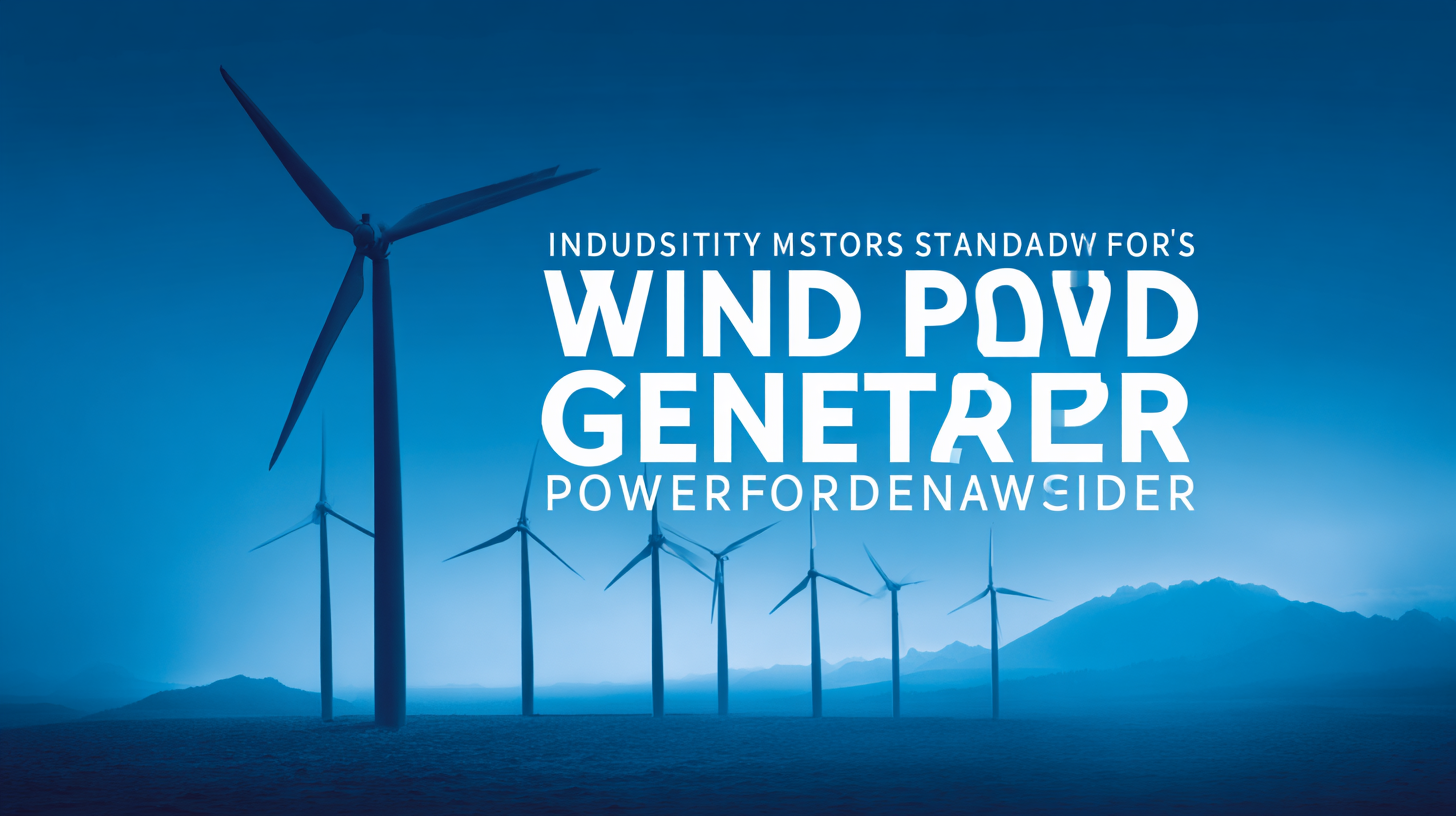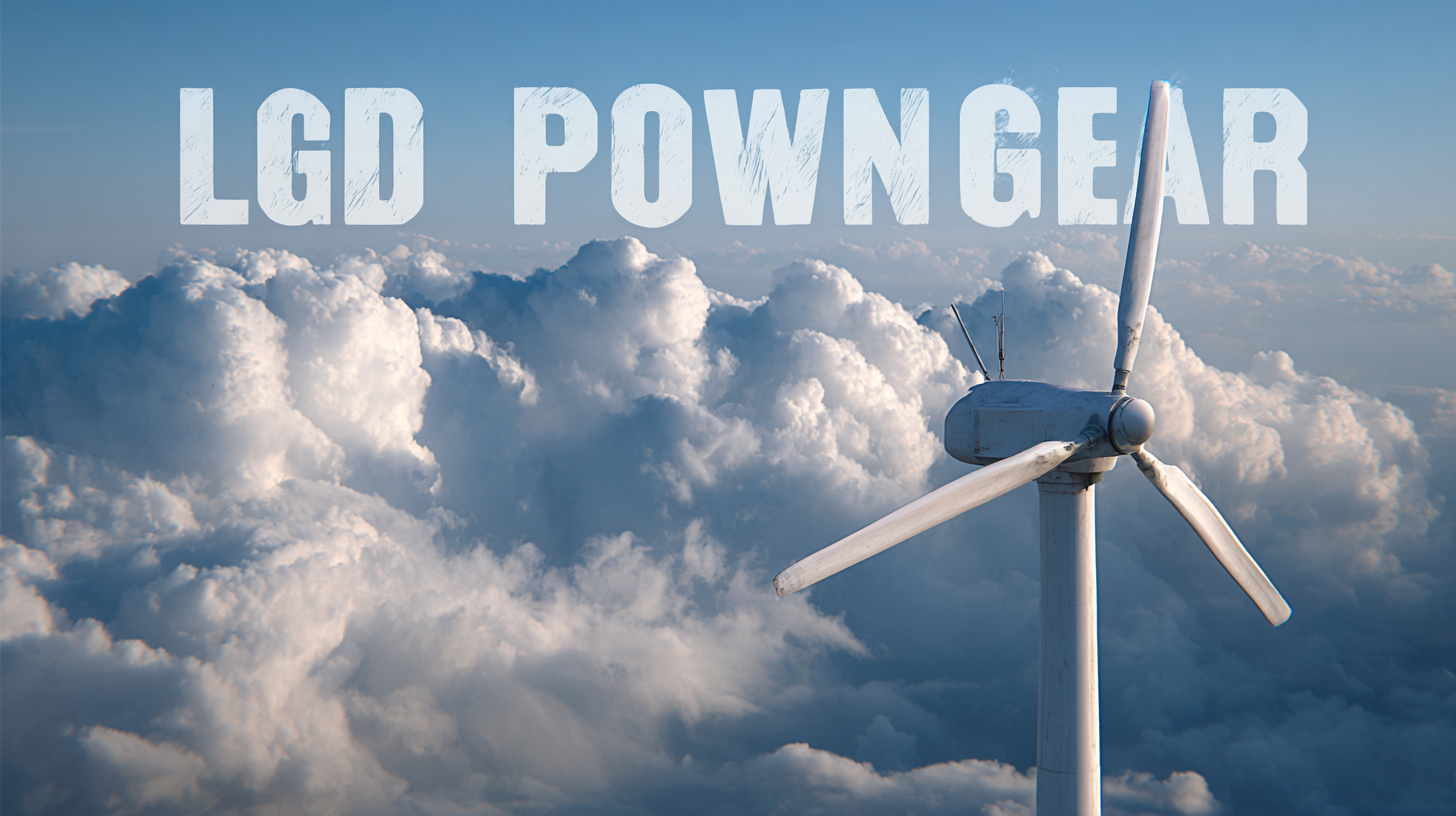In the rapidly evolving renewable energy sector, understanding the industry standards for optimal Wind Power Generator performance has become paramount. According to the Global Wind Energy Council's Annual Market Update, the global wind power capacity reached 743 GW by the end of 2020, reflecting a surge in investments driven by a growing focus on sustainability and carbon reduction. However, achieving maximum efficiency from wind power generators requires adherence to established industry norms and technological advancements. Reports suggest that the performance of these generators can vary significantly, with optimal setups leading to energy outputs that exceed initial projections by up to 30%. As the demand for clean energy surges, it is crucial for stakeholders in the wind energy ecosystem to align their strategies with the best practices, ensuring that their installations not only meet but exceed the required performance benchmarks for longevity and reliability.

In the rapidly evolving field of wind power generation, industry standards play a crucial role in ensuring optimal performance and reliability of wind turbines. These standards serve as benchmarks that guide manufacturers, developers, and operators in designing, constructing, and maintaining wind power systems. By adhering to established guidelines, stakeholders can improve efficiency and safety, ultimately leading to more sustainable energy production.

The importance of industry standards becomes even clearer when considering the integration of wind power into the broader energy grid. Consistent practices across the industry facilitate compatibility between different systems and technologies, reducing operational challenges and enhancing energy output. Furthermore, these standards support innovation by encouraging the adoption of new technologies while ensuring that they meet rigorous safety and performance criteria. As the global demand for renewable energy continues to grow, industry standards will be vital in steering wind power generation toward a more efficient and cohesive future.
When exploring different types of wind power generators, it's essential to understand the various designs and their specific applications. Horizontal axis wind turbines (HAWTs) are the most commonly used generators, known for their efficiency and higher energy output. They typically feature two or three blades that rotate around a horizontal shaft. On the other hand, vertical axis wind turbines (VAWTs) offer unique advantages, particularly in urban environments where wind patterns can be unpredictable. VAWTs have a simpler design and can capture wind from any direction, making them a great alternative for smaller-scale projects.
**Tip:** When selecting a wind generator, consider the typical wind conditions in your area. Conducting a wind resource assessment can provide valuable insights into the most suitable turbine type for your needs.
Additionally, emerging technologies like offshore wind turbines are gaining traction due to their ability to capture stronger and more consistent winds over the ocean. These massive structures can significantly enhance power generation capacities but come with higher initial costs and engineering challenges.
**Tip:** Always stay informed about local regulations and zoning laws regarding wind turbine installations, as these can impact your project’s feasibility and costs.

As the global demand for renewable energy grows, wind energy technologies are rapidly evolving, offering a range of alternatives that enhance efficiency and performance. A recent report by the International Renewable Energy Agency (IRENA) states that the levelized cost of electricity (LCOE) for onshore wind has dropped to as low as $30 per megawatt-hour (MWh) in some regions, showcasing the competitive edge of wind power over fossil fuels. This dramatic cost decline is attributed to advancements in turbine technology and larger turbine sizes, which allow for greater energy capture from the wind.
Moreover, offshore wind technology is making significant strides, with the Global Wind Energy Council (GWEC) projecting that offshore capacity could reach 234 GW globally by 2030. This shift towards offshore installations is largely driven by the higher and more consistent wind speeds available in marine environments. Comparative analyses indicate that while offshore wind projects generally require higher initial investments, their longer operational lifespans and increased capacity factors make them an attractive choice for future energy solutions. Understanding these alternatives and their respective performances is crucial for stakeholders aiming to harness the full potential of wind energy while adhering to industry standards.
Evaluating performance metrics for wind power generators is essential for choosing the right option for optimal energy production. Key performance indicators include capacity factor, efficiency, and reliability. The capacity factor measures the actual output of a wind generator compared to its potential maximum output, providing insights into its effectiveness in harnessing wind energy. A higher capacity factor indicates a more efficient generator that can produce energy consistently across varying wind conditions.
Another critical metric is the efficiency of the wind power generator, which refers to how effectively it converts wind energy into electrical energy. This can vary widely among different models and designs, making it crucial for purchasers to conduct thorough comparisons based on manufacturer specifications. Reliability is also a significant factor; it encompasses the durability and maintenance requirements of the generator. Generators that require less maintenance and have lower failure rates are generally preferable, as they contribute to lower operational costs and ensure a steady output of renewable energy. By closely evaluating these performance metrics, individuals and organizations can make informed decisions that will enhance the overall performance and sustainability of their wind power projects.
| Generator Type | Rated Power (kW) | Efficiency (%) | Cut-in Speed (m/s) | Rated Speed (m/s) | Cut-out Speed (m/s) | Weight (kg) |
|---|---|---|---|---|---|---|
| Horizontal Axis | 1500 | 92 | 3 | 12 | 25 | 1200 |
| Vertical Axis | 800 | 85 | 2 | 10 | 20 | 600 |
| Offshore | 3000 | 95 | 4 | 15 | 30 | 2500 |
| Small Scale | 500 | 80 | 3 | 9 | 20 | 400 |
The wind power industry is on the brink of transformative changes as it adapts to emerging trends and standards. With increasing emphasis on sustainability, manufacturers are seeking ways to make wind turbine production greener. A key focus is on reducing the carbon intensity of steel, a major component in turbine construction. Setting industry standards for low-carbon steel not only benefits wind energy but can also ripple positive effects throughout various sectors, aligning with global decarbonization goals.
As countries like China unveil ambitious renewable energy plans, we see a clear direction towards a more robust and sustainable wind power landscape. Future innovations are likely to blend advancements in technology with enhanced regulatory frameworks that support clean energy adoption. Notably, energy storage solutions are gaining traction and complementing wind energy, thereby addressing the intermittency issues associated with renewable sources.
Tip 1: Invest in training programs that emphasize green technology skills for employees to stay ahead in the evolving market.
Tip 2: Collaborate with industry coalitions to promote and adopt best practices for sustainable manufacturing processes.
The synergy between renewable energy initiatives and industry standards will drive further advancements in wind power, ensuring it remains a vital player in the global shift toward sustainability.